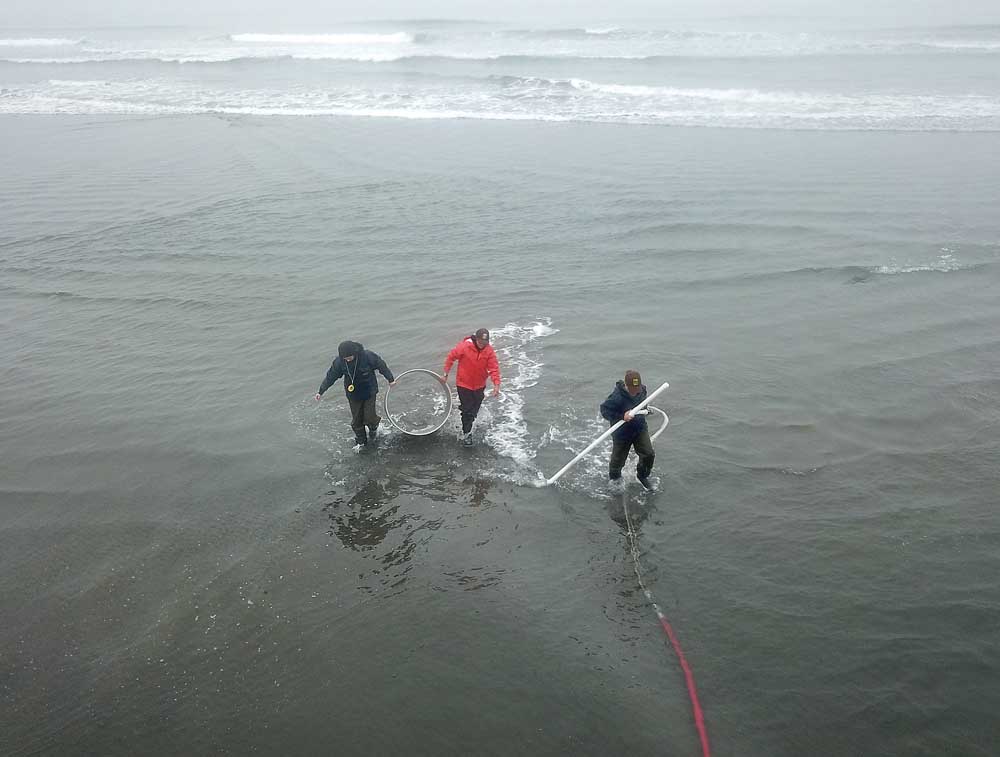Razor clam digs delayed on Clatsop beaches
Published 4:57 am Friday, September 28, 2018

- Staff with the Oregon Department of Fish and Wildlife collect razor clams near Fort Stevens State Park in July.
Oregon fishery managers have delayed the start of the fall razor clam harvest along Clatsop County beaches after a recent stock assessment found the clams are too small.
Trending
In a situation that state shellfish biologist Matt Hunter called far from normal, razor clams are “moderately abundant” but the majority had shell lengths between 2 to 3 inches — too small to be harvested by commercial clammers or desired by recreational clammers.
Clatsop beaches are already closed seasonally to diggers from mid-July through September to give young clams a chance to grow. They will remain closed to diggers while fishery managers collect public feedback in October on how digs should be managed in the future.
“We hear it all the time on the beach, informally, anecdotally,” Hunter said.
Trending
The meeting in October will be a chance to formally gather feedback from stakeholders that will inform a staff presentation to the Oregon Fish and Wildlife Commission in December.
“We don’t have a management plan per se for the razor clam fishery and that might be the first thing we’re tasked with, creating a management plan,” Hunter said.
A date has not been set for the meeting in October, but it will be held in Clatsop County, in either Astoria or Seaside.
Oregon Fish and Wildlife Commissioners and fishery managers said this summer it may be time to review how razor clam seasons operate. They suggested the possibility of shifting seasons to fit when razor clams are bigger. Currently, Oregon’s beaches are open year-round to clammers with the exception of the seasonal closure on the Clatsop beaches. Areas also close if marine biotoxin levels spike to unsafe levels.
Washington state operates on a case-by-case basis from October through May, opening digs here and there on select beaches. But the Washington Department of Fish and Wildlife has had similar concerns recently about razor clam populations and their small size. The department has delayed traditional October razor clam digs on the Long Beach Peninsula until late December.
Both states are trying to avoid situations where smaller clams are wasted when diggers either purposefully or inadvertently discard them in pursuit of larger clams.
Ideally, razor clam populations on a beach should be a mix, with a large amount of younger, smaller clams but also larger 1 and 2-year-old clams and then a scattering of much older, much larger clams.
“In 2004, we also saw large numbers of small razor clams along Clatsop beaches, but they were more variable in size with a few medium and large clams,” Hunter said. “Right now, it is difficult to find any razor clams larger than 4 inches.”
Of the 50 clams Hunter and staff dug this summer, only three were of a commercial legal size.
The beaches in Clatsop County are productive clam beds and a popular destination for clammers. Razor clams at the beaches account for 95 percent of the clams harvested in Oregon. Other beaches in Oregon are open for razor clamming. The south coast, from the south jetty of the Umpqua River to the California border, remains closed because of high levels of marine biotoxins.









